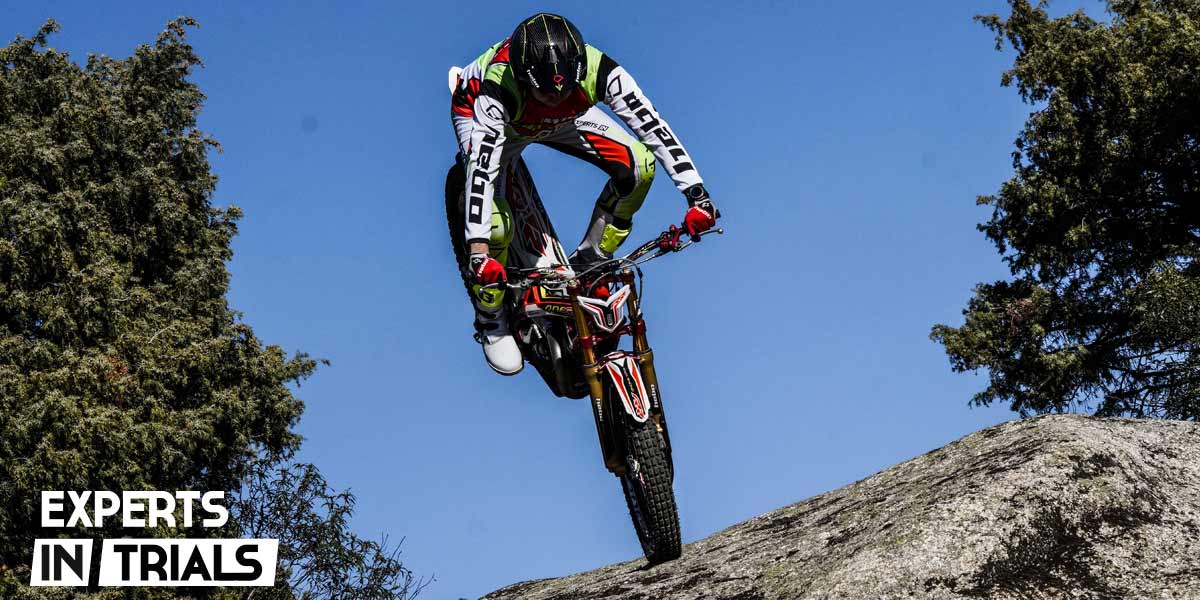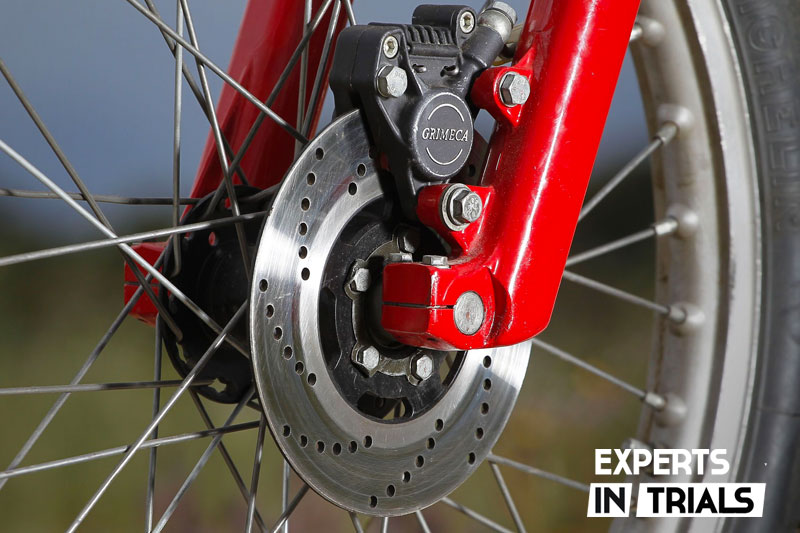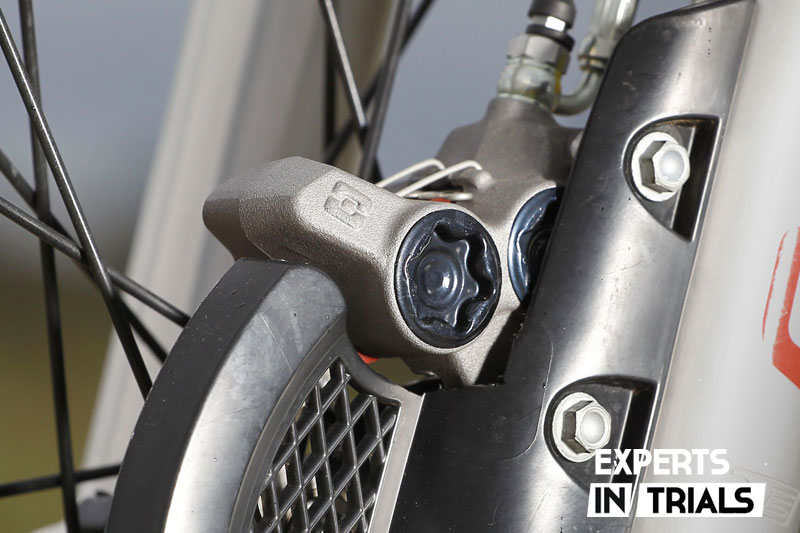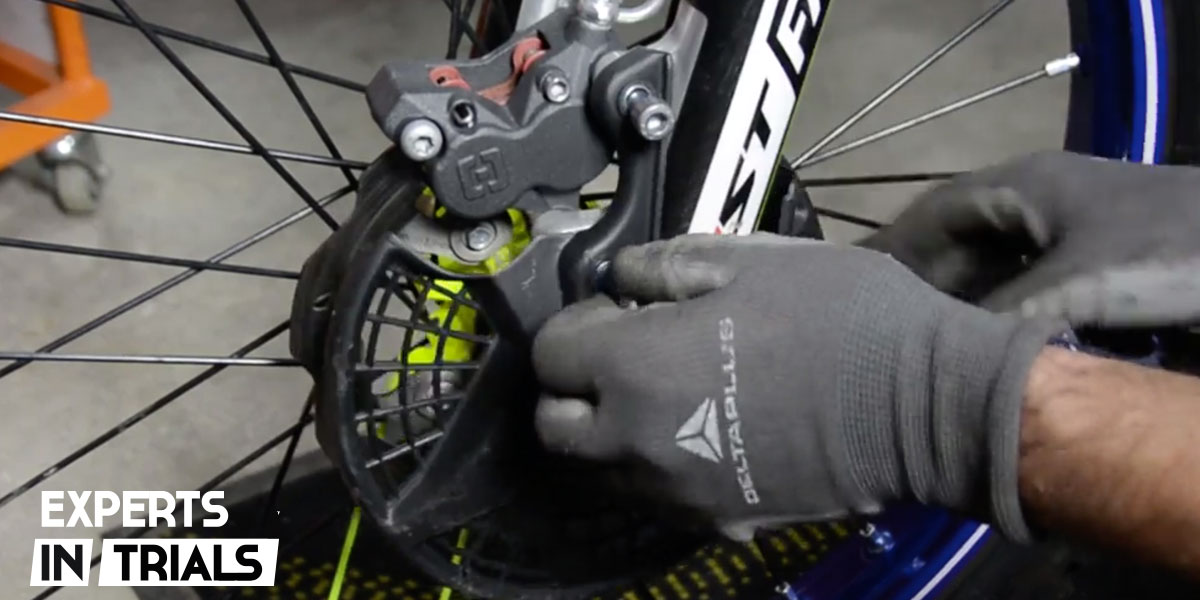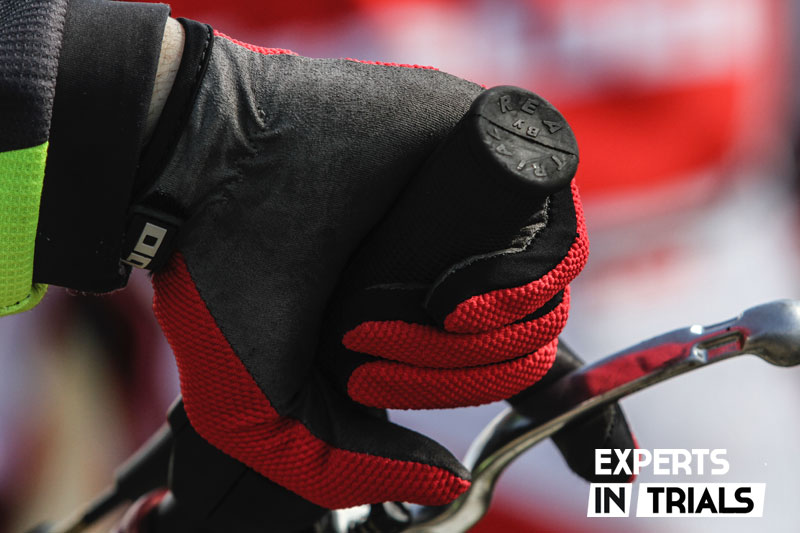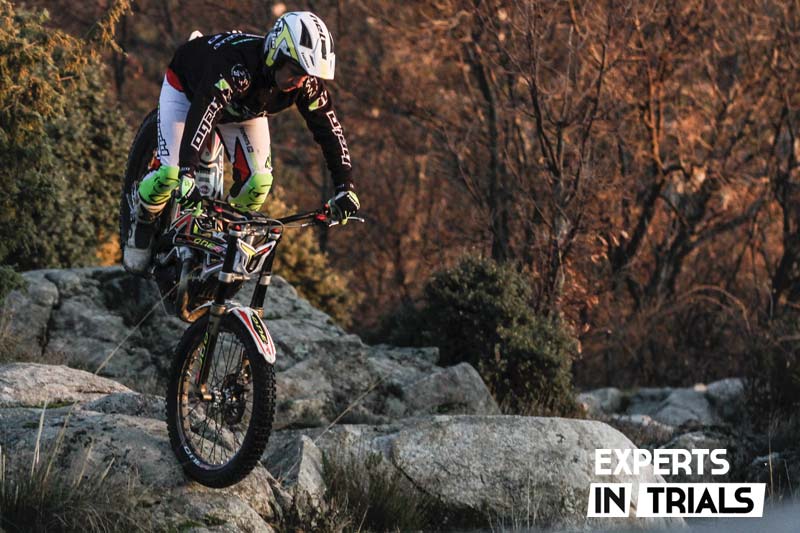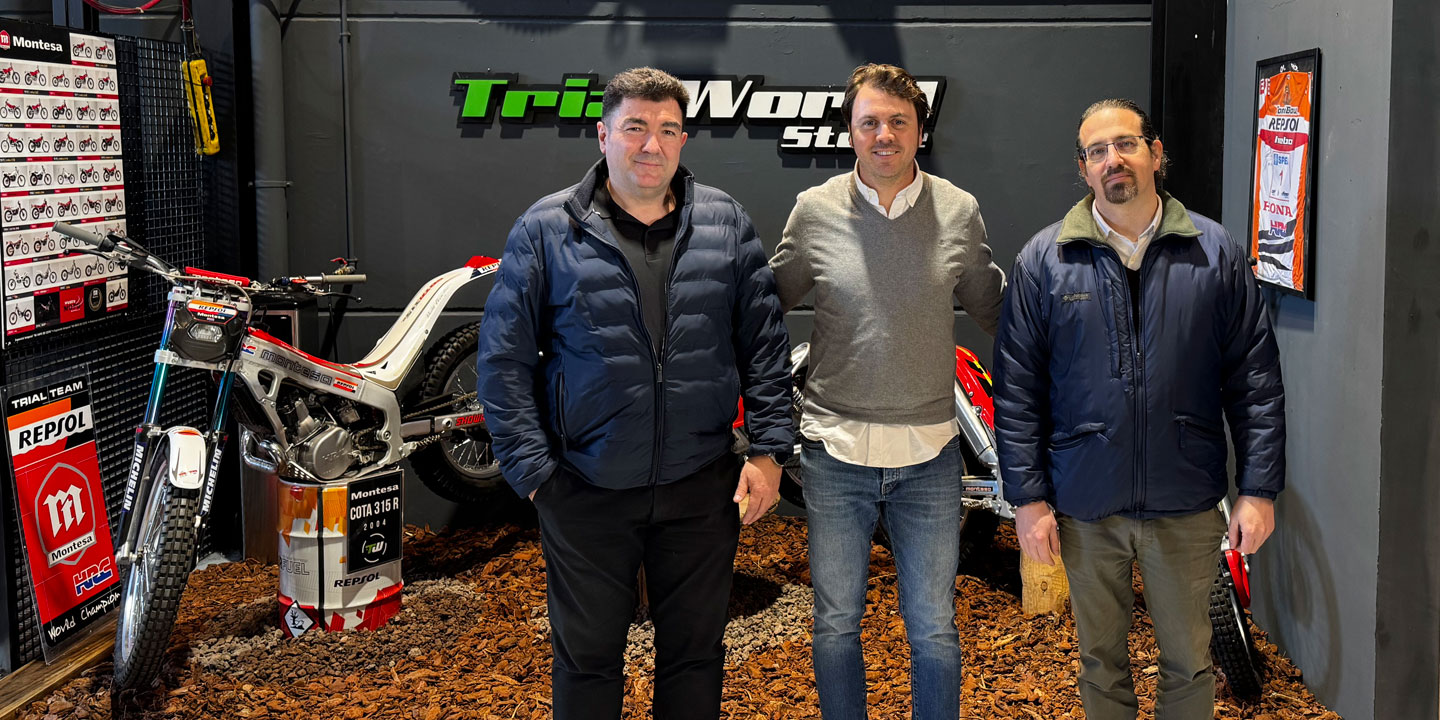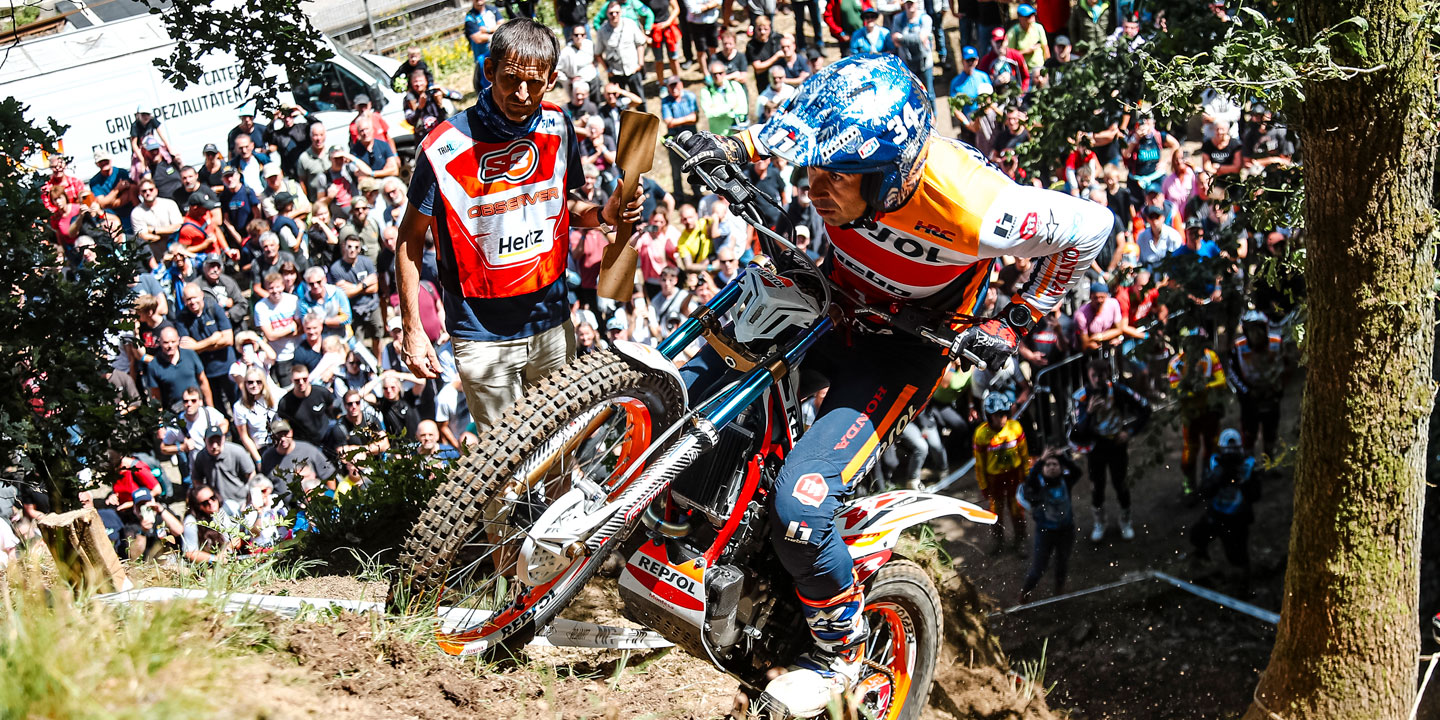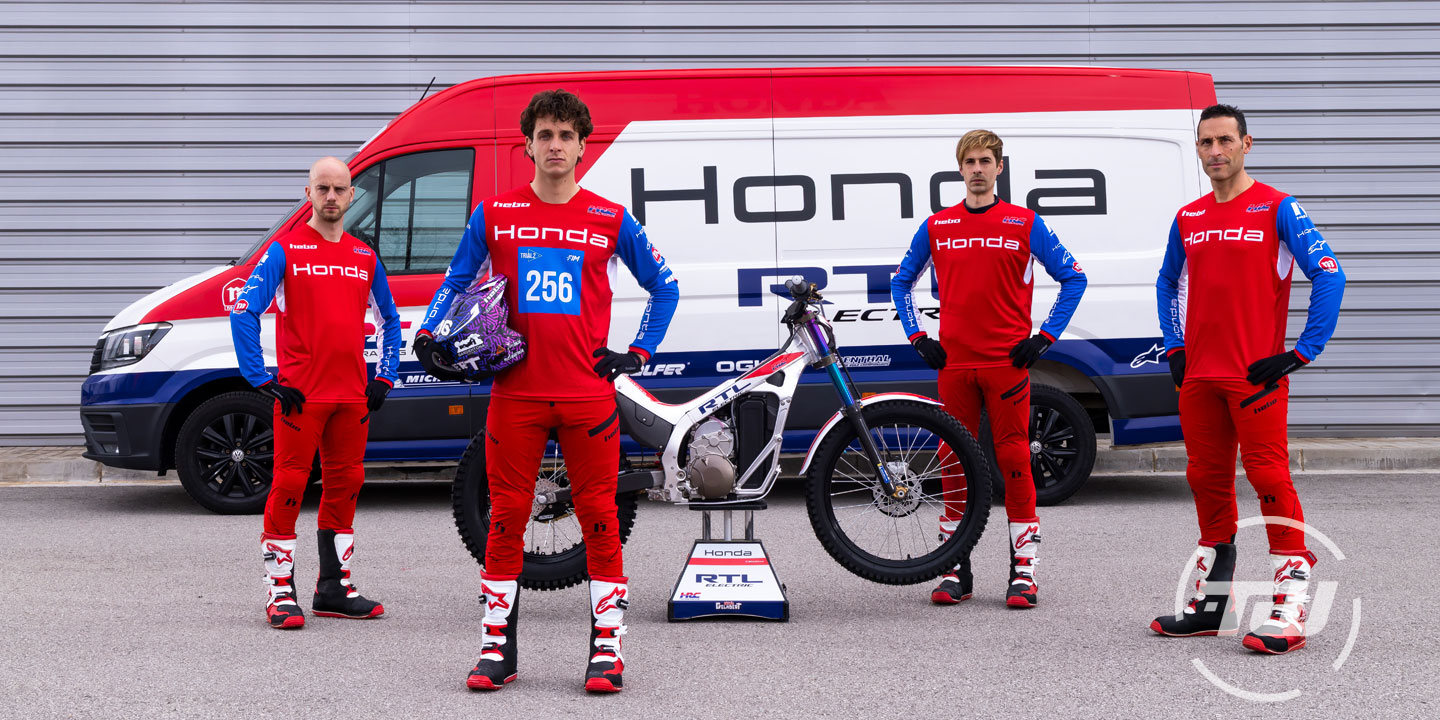Braking is one of the most relevant technical aspects of the trial bike. It is a discipline where balance and precision are everything, the braking system constantly helps us. For example, when it comes to positioning, with the usual
movements of the rear or front end
. And also when climbing obstacles, as the control of the rear end prevents the bike from lifting more than necessary.
It’s simple to explain. How much our
braking system performs on the trial bike
, we must compensate with more force on the lever, or failing that, technique. And this generates, in addition to imprecision, tiredness.
Before we get into the nitty-gritty, let’s make some analyses of the technical evolution of brakes on trial bikes.
The most important challenge was the introduction, at the end of the 80s, of disc brakes with single-piston calipers. At the beginning of the 90s we began to find improvements in brake cylinders with the arrival of AJP, and by the end of this decade they would end up being complemented by the mediocre four-piston calipers signed by Hebo.
Already in 2001 we have one of the great evolutions, with AJP four-piston calipers on floating ventilated discs in the front and rear with a much more powerful AJP double piston caliper, which in most models we began to see located inside the swingarm.
In 2013 and 2014 there were a few years of transition between AJP and Braktec that were terrible for the models of those years, as the solution was clutch and brake pumps of the Formula brand, whose experience was mainly reduced to the bicycle.
Since 2014 Braktec has been designing new brake and clutch master cylinders that remain, with minor variations, to this day. New Braktec monobloc brake calipers
were also developed, the main advantage of which is that, as they are a single structure (and not two joined together), the flex of the materials is reduced and braking is enhanced. In 2019 there was a new evolution of these brake calipers, adding a central thru-bolt that provided even more forcefulness in braking.
WHY DOES MY TRIAL BIKE BRAKE BADLY?
To understand a possible problem, you have to reflect on the philosophy of using a trial bike.
Usually the brakes work at a low temperature when not driving at high speeds, making the durability of the pads very high. As a curiosity, using the bike a couple of weekends a month, the average fan can have brake pads last between 3 and 5 years. In other words, they often end up being replaced sooner due to lack of efficiency than due to wear and tear of the ferode itself.
In the event of a braking problem on the bike, we must make the following checks:
1) Check that the disc is not bent. To do this, simply put the bike up and leave the wheel rolling freely with a reference on the brake disc.
2) Check the brake pads of the trial bike. We disassemble the calipers and remove the pads, assessing both the wear of the ferode and a possible crystallization of the material. In the latter case, we can try sanding the brake pads a little to remove the surface layer and make way for new material. To do this, we will put a fine sandpaper on a smooth surface and make small circles loosely with the brake pads.
3) Check brake fluid. If it’s low, it’s time to fill.
4) Check the feel of the master cylinder. If the lever collapses against the throttle grip, or the feel is spongy, it’s time
to bleed the brake circuit by following these steps.
5) If the problem is due to a brake master cylinder malfunction, it’s time to check the system and assemble a brake master cylinder repair kit. Basically, it’s adjusting the system that acts between the lever and the pump.
> Braktec brake master cylinder for trials
6) In all these previous steps always check that there is no oil in the brake disc, pads or brake caliper. This can happen, for example, because a fork seal leaks oil and kills the braking system. In this case, the brake pads would have to be replaced.
IMPROVE THE BRAKING OF THE TRIAL BIKE
Once the above cases have been understood, it is time to replace elements or repair the fault. This also does not guarantee that we will have a great braking, since possibly the rest of the components have already suffered a deterioration in terms of performance.
The first point to improve braking is
to replace the brake pads
.
For price and durability, we always recommend fitting
good brake pads on your trial bike
. Braktec supplies its equipment with Galfer pads, which in turn offers two types of compound, the standard and a second sintered. The difference is in the material of the ferode, with the sintered ones being more efficient in braking.
Second, put fresh brake fluid throughout the system and bleed the circuit.
To do this, you have to use this
DOT4 brake fluid
and bleed it by following this tutorial.
Thirdly, clean the brake caliper inside and the discs thoroughly.
For this point we will use this
brake cleaner
, which will remove any trace of grease or dirt from the brakes. Important! Never use oils and greases.
Fourthly, replace the
brake discs of the trial bike
.
It is a less common task, but it is true that slick discs have less bite and by mounting better ones the power gain in braking is very considerable.
The fifth point is to update the system completely.
A solution that is often more effective is to replace the entire brake assembly. In the case of the front axle, we have a
complete Braktec brake kit for trial bikes, consisting of a Galfer
master cylinder, hose, caliper and brake pads. The system comes already purged and comes only to be screwed to the handlebars and fork. Another great advantage is that it is a universal system and can be mounted directly on any trial bike from the last 20 years.
BRAKE LEVERS FOR TRIAL BIKES
It seems very obvious to point out that the levers must be in perfect condition. If we tighten the thru screw between the master cylinder and the lever too much, we are slowing down the free travel of the lever, so it intercedes negatively on the performance of the brakes.
So does a shoddy lever. It is not necessary to mount original levers, but they do need to be of optimal quality.
Here is a guide to compatible trial brake levers by model:
>
Trial brake lever for AJP and Braktec
(non-original)
> Trial brake lever for Grimeca (Beta EVO, Rev3 and Montesa Cota 315R motorcycles from 97 to 99)
> Braktec trial brake lever for AJP and Braktec
> APICO Race trial brake lever with regulator for AJP and Braktec
> Short trial brake lever for AJP and Braktec
> APICO Flexible Trial Brake Lever for AJP & Braktec
> Domino Classic Trial Brake Lever
BRAKE PADS FOR TRIAL BIKES
Beta Techno Brake Pads
Sherco trial brake pads 1999 to 2001
Scorpa SY trial brake pads
Gas Gas Contact brake pads 1989 to 1998
Montesa Cota 315R and Cota 314R brake pads (up to 2000)
Gas Gas TXT Edition brake pads 1999 to 2001
Gas Gas TXT Pro Brake Pads 2002 to 2015
Ossa TR 280i Brake Pads
Montesa Cota 315R brake pads 2001 to 2004
Montesa Cota 4RT brake pads 2004 to 2015
Sherco Trial Brake Pads 2002 to 2015
Trial brake pads all brands from 2016 to 2018
Trial brake pads all brands since 2019
TRIAL BRAKE TUTORIALS
Tutorial on how to disassemble trial brake pads
Tutorial on how to bleed the brake circuit on a trial bike
